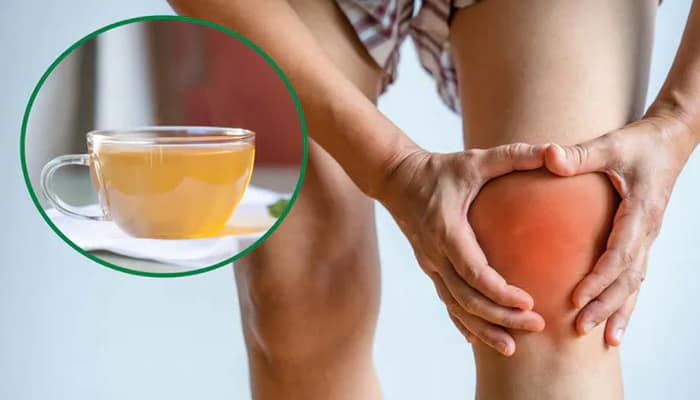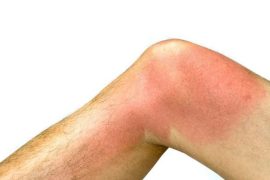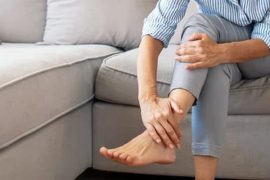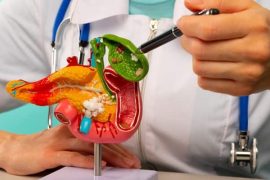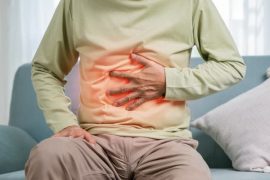Зміст
Do you experience knee pain when walking, running, or resting? Are you wondering how to help yourself without visiting a podiatrist? Find out the best home remedies for knee pain.
Why do my knees hurt?
The knee joint is our largest joint. Therefore, knee pain occurs frequently regardless of age, gender and physical activity. However, they don’t have to be a symptom of something serious.
The most common causes of knee pain are:
- overload – associated with overweight or obesity, as well as improper exercise;
- injuries – fractures, sprains, dislocations, ruptures of structures that make up the knee joint;
- meniscus injuries – in young people most often occur when there is a sharp change in the direction of movement of the knee (more often in athletes), and in older people the cause is degenerative joint diseases;
- chondromalacia of the patella – i.e., softening of the interarticular cartilage; manifested by a sensation of clicking and bouncing in the knee during movement;
- Baker’s cyst – a clearly palpable oval-shaped swelling in the popliteal fossa, filled with fluid; causes joint stiffness and pain when bending the knee;
- tendinitis – the biceps femoris, popliteus or gastrocnemius muscles are most often affected; the pain increases with walking, kneeling and squatting, but there may also be problems with full extension of the knee joint;
- runner’s knee – most often occurs in long-distance runners, jumpers, football players and skiers; there is a burning pain in the front and side of the knee, radiating downwards, swelling of the joint and clearly audible crepitus in the knee;
- moviegoer’s knee – pain that intensifies when bending the knee, as well as when sitting for a long time with bent knees (like in a movie);
- gout – deposition of sodium urate crystals in the joints; pain most often appears at night, accompanied by swelling of the joint, fever, and chills;
- cancer – primary musculoskeletal cancer or metastases from other cancers can cause pain in the knees or other joints.
Home Remedies for Knee Pain – Exercises
Before you start training, remember a few important things:
- Always start with a warm-up.
- Exercise through a pain-free range of motion. They cannot cause any more pain during or after exercise.
- Adjust the duration of the workout and the number of repetitions according to your capabilities.
- Remember to move smoothly and avoid jerking.
- If pain or other discomfort occurs during exercise, change position or stop exercising.
Exercise No. 1 (warm-up)
Lie on your stomach with your legs straight. Perform rhythmic, alternating bending and straightening of the knees. Do 2 sets of 30–40 seconds, with a 20-30 second break between sets.
Exercise No. 2
Lie on your right side, bend your right leg slightly at the knee, and straighten your left leg. Remember that the left leg should not “run” forward or backward, but lift it rhythmically. Perform the exercise in two sets of 30–40 seconds, with a break of 20–30 seconds. Do the same exercise on the right side.
Exercise No. 3
Lie on your back, straighten your left leg, pull your toes as close to your body as possible, bend your right leg at the knee. Perform slow, rhythmic lifts of your left leg. If during the exercise you feel discomfort when straightening your knee, you can gently bend it and continue the exercise. Do two sets of 20–30 seconds each with a 20-30 second break. Repeat the exercise on your right leg.
Exercise No. 4
Lie on your stomach, straighten your legs and point your toes out as far as possible (as if you were standing on tiptoes). Raise your leg about 15-20 cm. Do 2 sets of 20–30 seconds with a break of 20–30 seconds. Repeat the exercise on the other leg.
Exercise No. 5 (stretching)
Lie on your stomach, wrap a belt or towel around your ankle, grab the other end and pull your heel toward your buttock. Perform the exercise on both legs, in two sets of about 30 seconds each, with a break between sets.
You can do these exercises safely at home, without the need for any equipment. It will take you about 15 minutes. They will help you strengthen the muscles surrounding the knee joint without putting stress on the knee itself and reducing pain.
What is the best position to keep your knee?
The knees do not like a fixed position. Standing, walking, sitting with bent knees, or kneeling for too long can cause pain. To relax your knee as much as possible, sit on a bed with your legs straight or place a small rolled-up towel under your knee.
When treating knee pain, the most important things are rest, avoidance of excessive stress, frequent changes of position, the use of compresses, and (if necessary) rubbing in painkillers, anti-inflammatory and decongestant ointments.
Home remedies for knee pain – compresses
Ice pack – most often used for recent knee injuries. To prepare a compress, you can use gel compresses available in pharmacies, ice cubes or any frozen product. Don’t forget to wrap the compress bag in a cloth. Direct application of ice to the skin can cause local tissue frostbite. Keep this compress on your knee for about 15–20 minutes and repeat it every 2–3 hours if necessary.
Warm compresses. Like cold compresses, you can use heated gel compresses or a regular towel soaked in warm water.
Vinegar compress – water with vinegar mainly has a decongestant effect. This may help with mild pain.
Cabbage leaf compress – mainly intended to combat knee swelling, it is best to use ground cabbage pulp or a leaf crushed with a meat hammer.
Baking soda compress. In case of knee pain and swelling, you can use a baking soda solution. Dissolve 2 tablespoons of baking soda in a glass of warm water, wet a compressor towel, and wrap it around your knee.
Turmeric compresses. Turmeric has anti-inflammatory properties, so it can be used in compresses to relieve knee pain. Mix turmeric with honey or egg yolk and apply this paste on your sore knee. Leave for about 15 minutes.
Comfrey Compress – Comfrey has analgesic, anti-inflammatory, decongestant and regenerative properties. Place crushed comfrey leaves on gauze and wrap around your sore knee.
Compresses made from naturally occurring ingredients may only be a temporary treatment for sudden minor pain. If your knee pain persists, see your doctor or physical therapist. Only a specialist can make an accurate diagnosis and prescribe appropriate treatment.


